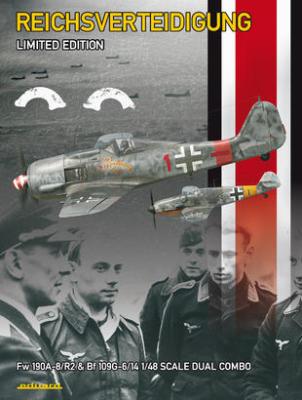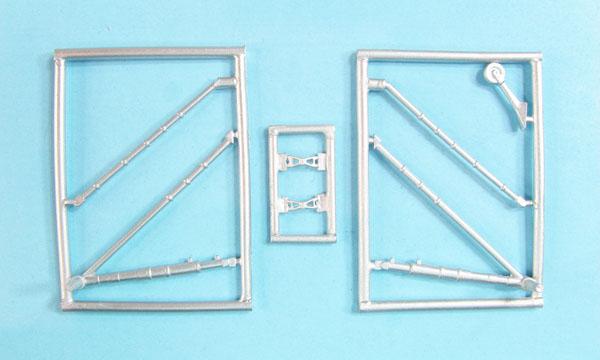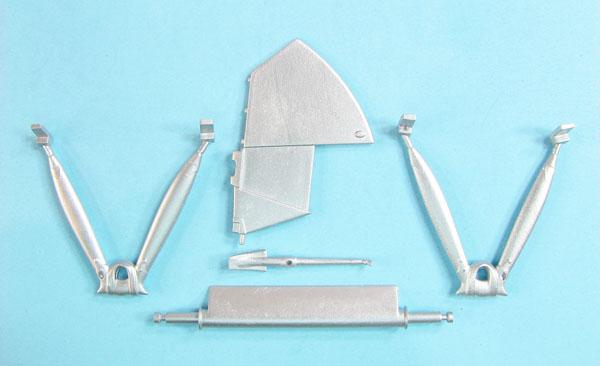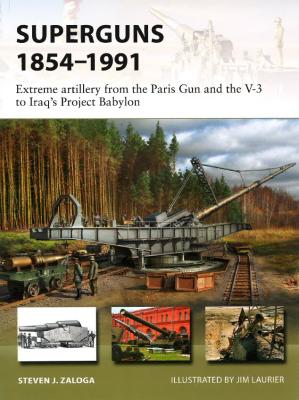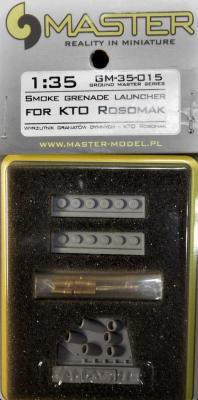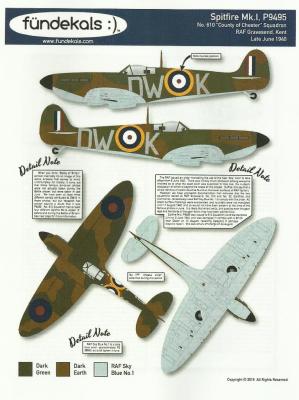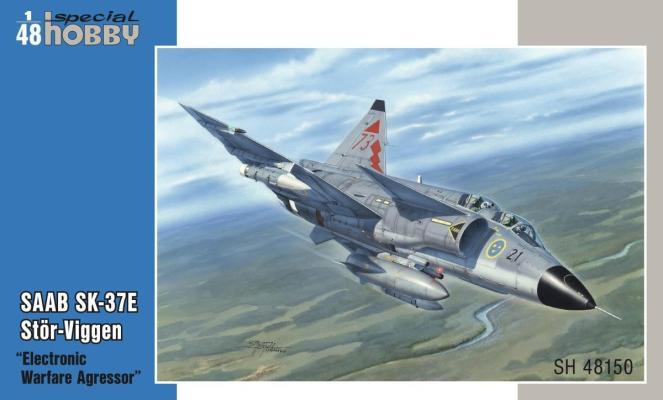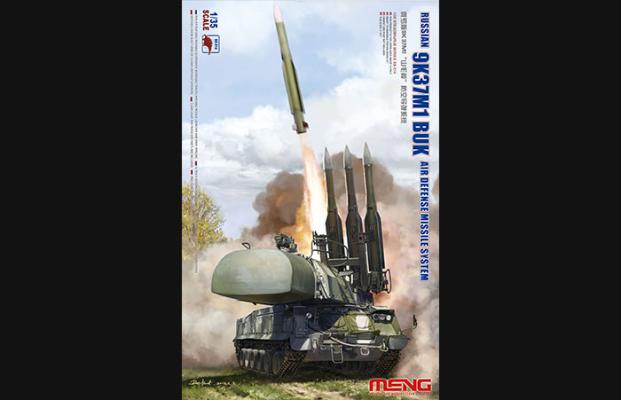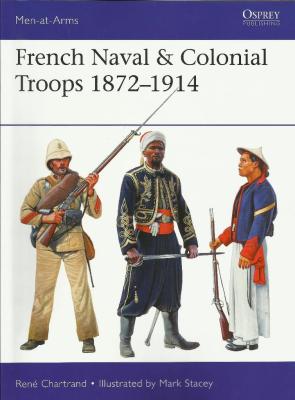Eduard’s new dual combo Reichsverteidigung (Defense of the Reich) profipack combo set is the newest way for Eduard to show off their new tool Fw-190A and Bf-109G kits. This dual combo is a perfect way to experience the new tooling and as a bonus you get an Eduard print of an fw190 racing away from a pursuing p-51.
February 2019
This is the Scale Aircraft Conversions (SAC) white metal landing gear replacement option for the 1/32 I-16 type 24/28 (ICM/Rev/Has) kits. If you have built in 1/32 scale you may have wondered at some point if the kit provided plastic landing gear will adequately support the model’s weight. These SAC items are primarily intended to address strength concerns, but there are two other advantages to using white metal landing gear: You can very slightly bend the main strut into perfect alignment once installed, and oleos (if applicable) can be fine sanded to a very shiny and realistic finish – no need for applying bare metal foil or painting oleos if you’re working with white metal.
Observations
These I-16 landing gear pieces match very closely the kit molds. Clean up is minimal.
This is the Scale Aircraft Conversions (SAC) white metal landing gear replacement option for the Wingnut Wings 1/32 LVG C.VI kit. If you have built in 1/32 scale you have probably wondered at some point if kit provided plastic landing gear will adequately support the model’s weight. These SAC items are primarily intended to address strength concerns but there are two other major advantages to using their white metal landing gear: First, it is possible to very slightly bend the strut pieces and attached wheels into perfect alignment once installed – to fine tune your alignment after gluing. With plastic, “once glued you’re screwed” so to speak. A second advantage of SAC landing gear is that oleos in white metal (although not applicable for this set) can be fine sanded to a very shiny and realistic finish – so no fiddling with bare metal foil or painting is necessary for SAC oleos.
Steven J. Zaloga was born in Pittsfield, Massachusetts to John and Muriel Zaloga on February 1, 1952. Steven earned his undergraduate degree cum laude in history at Union College and his Masters’ degree in history from Columbia University. He obtained a Certificate in International Affairs from the graduate program of the University of Cracow. He has worked in the aerospace industry for some twenty years as an analyst specializing in missiles, precision-guided munitions, and unarmed aerial vehicles. Steven has served with a federal think tank, Defense Analyses. He was the writer-director for The Discovery Channel's "Firepower" series from 1987 to 1992. He has authored many books on military technology, especially in armored warfare. Steven is a noted scale armor modeler and is a member of AMPS (Armor Modeling and Preservation Society).
The KTO Rosomak is a Polish 8x8 wheeled Infantry Fighting Vehicle. This smoke grenade launcher upgrade set is made for the IBG Models KTP Rosomak Polish APC – “The Green Devil”, kit number 35032 and for kit number 35033, the basic Polish APC. It is designed to be used with any Rosomak that have the 30mm turret.
This aftermarket kit consists of a resin plate, six brass launcher tubes, two types of resin tube covers and five very small brass rivets. The kit is very well packed in clear plastic bubble pack that is stapled to a backing card. There is a one-page instruction sheet that is inside this backing card. The parts are housed in cutouts in the foam backing, so they are very well secured and easy to see while still packaged.
If you’re as big a fan of Spitfires as I am, you’re going to REALLY love this product by Fündekals. Labeled “Spitfire Part 1” this product is actually two and a half sheets of decals, packed with markings. Frankly, I’ve never encountered a more useful decal sheet for Spitfires than this one.
Twelve different sets are included in this package (as well as numerous extras) covering everything from Spitfire Mk. 1s from the Battle of Britain to late-war Mk. XVIes. Not only British Spitfires are offered in the mix, but American Eagle Squadron aircraft are included as well. It does NOT, however, include walkways and stenciling, although it does include the gun patches associated with each aircraft.
The Saab 37 Viggen was an aircraft ahead of its time. Its designers used an unorthodox construction which enabled the plane to meet all requirements which had been laid on it and in some parameters even surpass them. The Swedish Air Force ordered several various versions of the Viggen jet fighter, its basic design formed a universal platform which, using specialized equipment, enabled the plane to be used for different roles. The first prototype machine took off for its maiden flight on 8 February 1967 with E. Dalström at the controls. The aircraft was powered by a Volvo RM8 turbofan, a license-built variant of the Pratt & Whitney JT8D with an afterburner and thrust reverser which, in addition to the double-delta wing design, enhanced the plane’s performance the takeoffs and landings on short airstrips. The avionics of the Viggen was state-of-the-art at the time, the Viggen was the first type to be equipped with a computer with integrated circuits.
The Buk (Beech Tree) missile system is an integrated system of self-propelled, medium-range surface-to-air missile systems developed by the Soviet Union and the Russian Federation. The Buk system is designed to counter all manner of airborne threats from cruise missiles to unmanned aerial vehicles. This new kit from Meng represents the Buk-M1-2 transporter erector launcher and radar (TELAR) vehicle. TELAR superstructure is a turret containing the fire control radar at the front and a launcher with four ready-to-fire missiles on top.
Last summer Eduard released its much anticipated MiG-21MF kit in 1/72 scale. The initial release represents aircraft manufactured at the Gorky factory. In conjunction with the release of this kit, Eduard also released a separate resin cockpit set for these late model MiG-21MFs.
The set includes nine resin parts, a color photo-etch fret and an acetate sheet with 2 heads-up screens and is intended as a complete replacement for the kit cockpit and ejection seat. As you would expect with Eduard, the resin parts are beautifully cast with exquisite detail and the detail on the photo-etch set is crisp and sharp.
The world’s perceptions concerning nationalistic colonialism have virtually reversed over the course of the last century, and the impact of such behavior and its aftermath by mostly European nations on less-developed areas of the world is still being debated today. That being said, for the figure modeler this era in human history is a goldmine of really interesting military uniforms, not least because so many of them combine European and local costumes in truly unique ways.
As far as global colonial powers during the 19th century go, France was certainly in the top three, having footholds throughout most of northern Africa as well as IndoChina and elsewhere. They incorporated large numbers of natives to help keep order in these regions, and in the process created some of these fascinating hybrids of dress. I can’t think of any other colonial power of the period who embraced this idea quite so enthusiastically, although perhaps the British are a close second.

